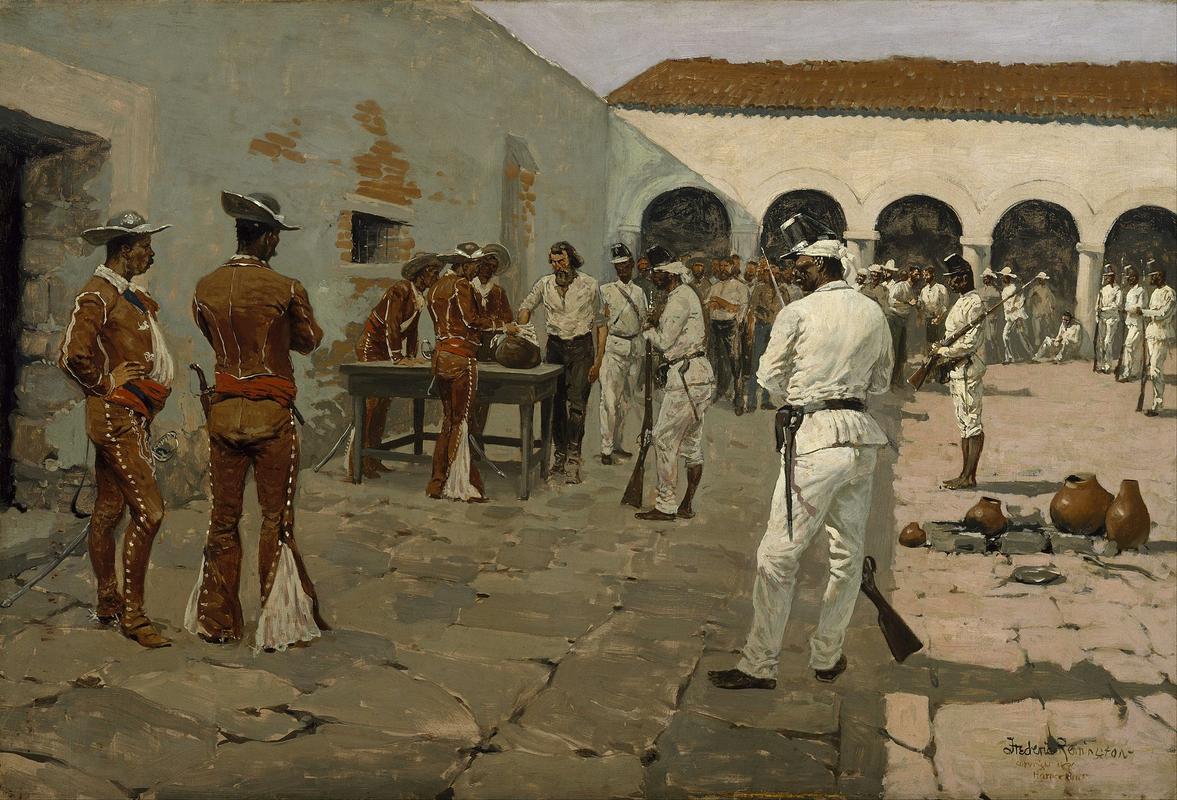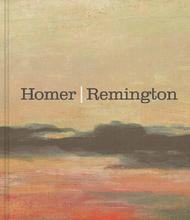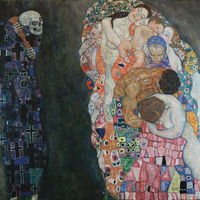More about The Mier Expedition: The Drawing of the Black Bean
- All
- Info
- Shop

Contributor
Frederic Remington still had about 18 years until his birth when the Mier expedition episode actually happened.
It's the 1800s and Texans wanted their autonomy from Mexico. Back in the 1800s, they were wildly adamant about that. Mexico refused to accept the independence of Texas, and Mexico and Texas battled profusely to gain dominion over the land.
Remington had always wanted to be a true blue cowboy. Unfortunately, he had to make do with being a successful artist who got to work for publications like Harper’s Weekly. Remington was born a little too late to live the cowboy dream, but he did find the next best thing. Through old stories and historical accounts, Remington would piece together stories of American bravery at the frontier. In 1896, he decided the story of the Mier expedition fit right into his “American Hero” agenda.
In 1842, Sam Houston asked for volunteers to join the Somervell Expedition, a military punishment to Mexico for attempting to raid Texan towns, and 700 people signed up. Houston put Alexander Somervell (hence the name) in charge of the men who were to enter Mexico and capture the towns of Laredo and Guerrero. Soon after the occupation of Guerrero, their expedition began to lose steam without more support from the Republic of Texas. On December 19, 1842, the expedition was disbanded. It turns out the whole thing was more of a political move for Houston than a sincere effort. But not everybody wanted to go back.
Around 300 stubborn men marched onward to take the town of Miers. The conflict was deadly to Mexican forces even though the Texans were outnumbered ten to one. Nonetheless, in January 1843, after a long battle with the military of generals Francisco Mejia and Pedro de Ampudia, the Texans surrendered. While in captivity, the Texans wreaked havoc. They were ordered to be executed, but diplomatic channels helped reverse the order. They tried to escape anyway. All of them were caught except three. The Mexican President at the time, General Santa Anna blew his lid when he heard about it. The Texans were ordered to be executed again. Only 176 remained. Diplomatic channels went into overdrive, with the ambassadors of the US and Great Britain urging Santa Anna to reduce the sentence. The Mexican general was known for his brutality, but Santa Anna decided that not all of them had to die. One in every 10 soldiers would meet their death, and would be selected by drawing from a jar of beans (159 of which were white, and 17 black). Imagine contemplating your death as you clutch a singular bean in your hand, scared to reveal the wrong one. Heard at the drawing of the black bean, “This is the tallest gambling scrape I was ever in."
Remington was definitely in on the Nationalist agenda. He wasn’t just painting scenes of glory and pride in the Wild West. He was painting an image of what America had to fear. In reality, the 300 men who embarked on their conquest of Miers lost 31 men at the battle, and were finally reduced to about 150 after two escape attempts and one jar of beans. The Mexicans, on the other hand, lost 600 people defending their own border. I’m just saying, if we're talking numbers...
Remington took liberties with the scene. Eyewitness accounts claim that they were walked in pairs of two to the jar. In Remington’s painting, the Texan prisoners approached their deaths alone. He also changed the bench to a table. He probably made these changes to dramatize the scene and to make his heroes look more dignified.
Sources
- Brack, Gene. "Mexican Opinion and the Texas Revolution." The Southwestern Historical Quarterly 72, no. 2 (1968): 170-82. http://www.jstor.org/stable/30238012.
- Sweeney, J. Gray. "Racism, Nationalism, and Nostalgia in Cowboy Art." Oxford Art Journal 15, no. 1 (1992): 67-80. http://www.jstor.org/stable/1360489.
- "Somervell Expedition -- Fall 1842." Lone Star Junction. Accessed July 31, 2019. http://www.lsjunction.com/events/somervel.htm.
- "A Guide to the Mier Expedition Papers, 1840-1937." University of Texas Libraries. Accessed August 01, 2019. https://legacy.lib.utexas.edu/taro/utcah/00425/cah-00425.html#did.
- Pelgrom, Jeroen. "Frederic Remington: The Mier Expedition, The Drawing of the Black Bean (1896)." Frederic Remington: The Mier Expedition, The Drawing of the Black Bean (1896). November 18, 2015. Accessed August 01, 2019. http://art-in-space.blogspot.com/
- "BLACK BEAN EPISODE." The Handbook of Texas Online| Texas State Historical Association (TSHA). June 12, 2010. Accessed August 01, 2019. https://tshaonline.org/handbook/online/articles/qmb01.
- "The Mier Expedition: The Drawing of the Black Bean." MFAH Teaching With Art. Accessed August 01, 2019. http://prv.mfah.org/twa/artcardp.asp?aid=67.













